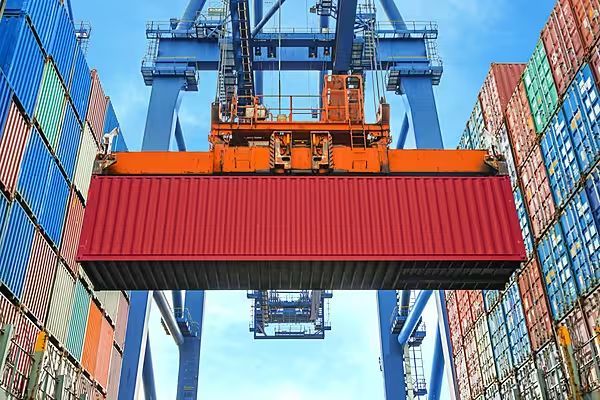Global freight volumes show signs of having bottomed out in the first quarter, signalling the industrial cycle may be near its trough, which could provide some support to oil prices later in 2023.
Global freight volumes fell 1.1% during the first three months of 2023 compared with a year earlier, according to the Netherlands Bureau of Economic Policy Analysis ('World trade monitor', CPB, 25 May).
But volumes were up by 0.2% in March compared with the prior year, after declining 2.5% in February and 1.2% in January, providing tentative signs the cyclical trough may have been reached.
TEUs
Singapore’s maritime container throughput climbed to a record 3.26 million twenty-foot equivalent units (TEUs) in April and was 7% higher than a year ago.
At London’s Heathrow airport, cargo was still down 7% in the three months from February to April compared with a year earlier, but that was a much smaller decline than the 14% in October to December.
At Narita in Japan, air freight was down 22% in the three months from January to March, but that was a smaller decline than the 26% between November and January.
In the United States, there were fewer signs the manufacturing and freight cycle was nearing its trough, which given the size and centrality of the country in the world economy makes the outlook less clear.
Shipping Containers
US railroads hauled 3.1 million shipping containers in the first three months of 2023 compared with 3.4 million in the same period in 2022.
US trucking firms reported activity levels were down by less than 1% in the first three months of 2023 but there was a noticeably weak end to the quarter with a decline of 5% in March.
At the nine largest U.S. container ports, the number of shipping containers handled was down 16% in April and 17% for the first four months of 2023 compared with the prior year.
Reflecting steadier demand, the cost of containerised ocean shipping has been stable since the middle of March after declining almost continuously for a year, according to the Freightos Baltic Exchange global container index.
Reaching The Trough?
Over the last year, global freight has been hit by excess inventories held all along the supply chain as consumer and business spending has reverted from merchandise to services after the pandemic.
Persistent inflation, rising interest rates and increased fears about an impending recession have also encouraged households and firms to be more cautious about spending.
The most recent data, albeit covering a small number of transport hubs, shows freight volumes may have stabilised or improved at the very end of the first quarter and into the start of the second.
A trough in manufacturing and freight activity would in turn help stabilise consumption of diesel and other distillate fuel oils across the major economies, providing some support to oil prices.
Easing Pressure
Lower prices for crude, gas and electricity compared with the middle of 2022 should ease some pressure on consumers’ spending power and business investment, supporting a gradual recovery.
But the rebound in China after the coronavirus pandemic has been more muted than expected at the start of 2023, which has sapped some of the momentum from the global economy.
Business inventories remain high across North America and Europe and the delayed impact of interest rate rises, tighter credit conditions and rising unemployment will continue to squeeze households and firms for at least the next six months.
If this is to be a turning point for freight markets, inflation must subside soon to avert pressure for much higher interest rates and another downward lurch in industrial demand.









